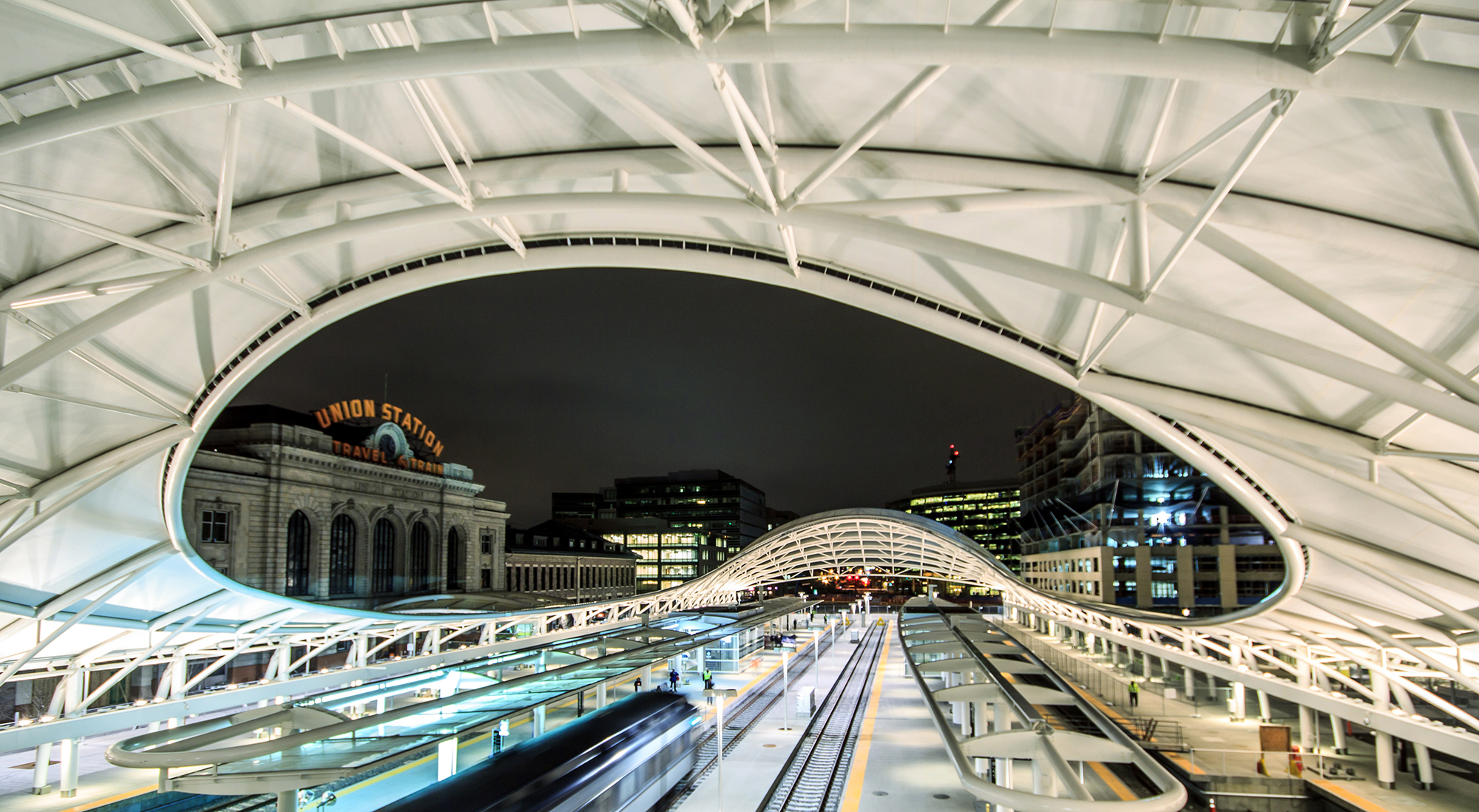Why Steel
Architecturally Exposed Structural Steel
It takes a huge amount of time and energy to create an elegant structural system. Why hide all that work when you can show it off?
Architecturally exposed structural steel (AESS) puts the aesthetic focus on the structural integrity of a building. The striking visual impact of these iconic structures is possible because steel is fabricated in a nearly limitless range of shapes, tapered forms, curves, colors, and finishes.
Structural steel comprises elements that are required to support the design loads of a building and fit within the components of a structural frame, according to the AISC Code of Standard Practice (ANSI/AISC 303-22). For clarity, the Architecturally Exposed Structural Steel (AESS) category system is typically only applied to fabricated structural steel elements such as anchor rods, base plates, beams, bracing, canopy framing, columns, connection materials, crane stops, girders, lintels, posts, shear stud connectors, and trusses. Unfinished, reused, galvanized, or weathering steel members may all be fabricated with AESS requirements.
AESS components get the royal treatment during fabrication, shipment, and erection to avoid blemishes and unwanted surface appearance. Workers take extra care when handling the steel and removing temporary braces or fixtures. For some categories, all backing and runoff tabs are removed, and welds are ground smooth. Oil, grease, dirt, and loose mill must also be removed from basic, unpainted steel for an attractive, striking finish.
AESS can fall within the following five categories:
- AESS 1: Basic Elements
- AESS 2: Feature Elements Not in Close View
- AESS 3: Feature Elements in Close View
- AESS 4: Showcase Elements
- AESS C: Custom Elements
All five categories are detailed in the AISC Code of Standard Practice (ANSI/AISC 303-22).
Different Viewing Levels, Different AESS Levels
Spaces like multilevel concourses provide the possibility for multiple AESS categories all in a single space and all visible at once. With any area employing multiple categories, the architect should provide clear notes as to where each category should be used and coordinate this documentation with the structural engineer’s drawings and specifications.
The decision to architecturally expose structural steel can add significant value to a building, but coordination is essential. All parties on a project--the owners, architects, engineers, general contractors, fabricators, detailers, and erectors--must have the same level of expectations to achieve the best end result for a project. The five AESS categories all require a high degree of evaluation and coordination in order to meet project expectations within budget and schedule.
When planning to use AESS, it is important to consider the following factors:
- Member Visibility
- Viewing Distance
- Location
- Lighting
- Coatings
- Style
- Adjacency
Resources
- AISC Code of Standard Practice, Reference Section 10: Architecturally Exposed Structural Steel. The 2022 Code (ANSI/AISC 303-22) provides a framework for a common understanding of the acceptable standards when contracting for structural steel. Section 10 deals explicitly with AESS.
- AESS Sample Specification: an editable document that can be updated and inserted into individual project specifications. The document was originalyl developed by the Structural Engineers Association of Colorado/Rocky Mountain Steel Construction Association Steel Liason Committee (SEAC/RMSCA)
- AESS Cost Matrix: an editable spreadsheet that can be updated to anticipate cost implications by specifying various levels of AESS on projects. This document was originally published by SEAC/RMSCA Steel Liason Committe in November 2017.
- AESS Shop Drawings: Shop drawings of the five AESS sculptures which can be downloaded and use to fabricate user's own versions. Contact AISC Steel Solutions Center at solutions@aisc.org if you'd like to be put in touch with a local fabricator to purchase your own drawings.
- AESS Sample Images: can be used to supplement project meetings to understand expectations for various categories of AESS.
- Architecturally Exposed Structural Steel: Specifications, Connections, Details This is a paperback book by Terri Meyer Boake
- Architecturally Exposed: Understanding the Art and Science of Architecturally Exposed Structural Steel: This is a one-hour video presented by AISC and featuring Terri Meyer Boake.
Looking for inspiration?
Lee Hall III
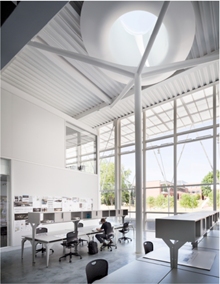
Lee Hall III, Clemson University, Clemson, South Carolina.
Photo courtesy of Skidmore, Owings & Merrill LLP. Credit: © Scott Frances | OTTO

Lee Hall III at Clemson University in Clemson, S.C., incorporates AESS as an educational tool to elegantly express buildings' steel structural system. Slender "tree columns" draw attention to the exterior, acting as feature elements that create an identity with purpose. This addition to the College of Architecture, Arts and Humanities is a display of clarity between architecture and engineering, as well as an expression of fine craftsmanship.
Photo courtesy of Skidmore, Owings & Merrill LLP. Photo credit: © Scott Frances | OTTO
Non AESS Steel
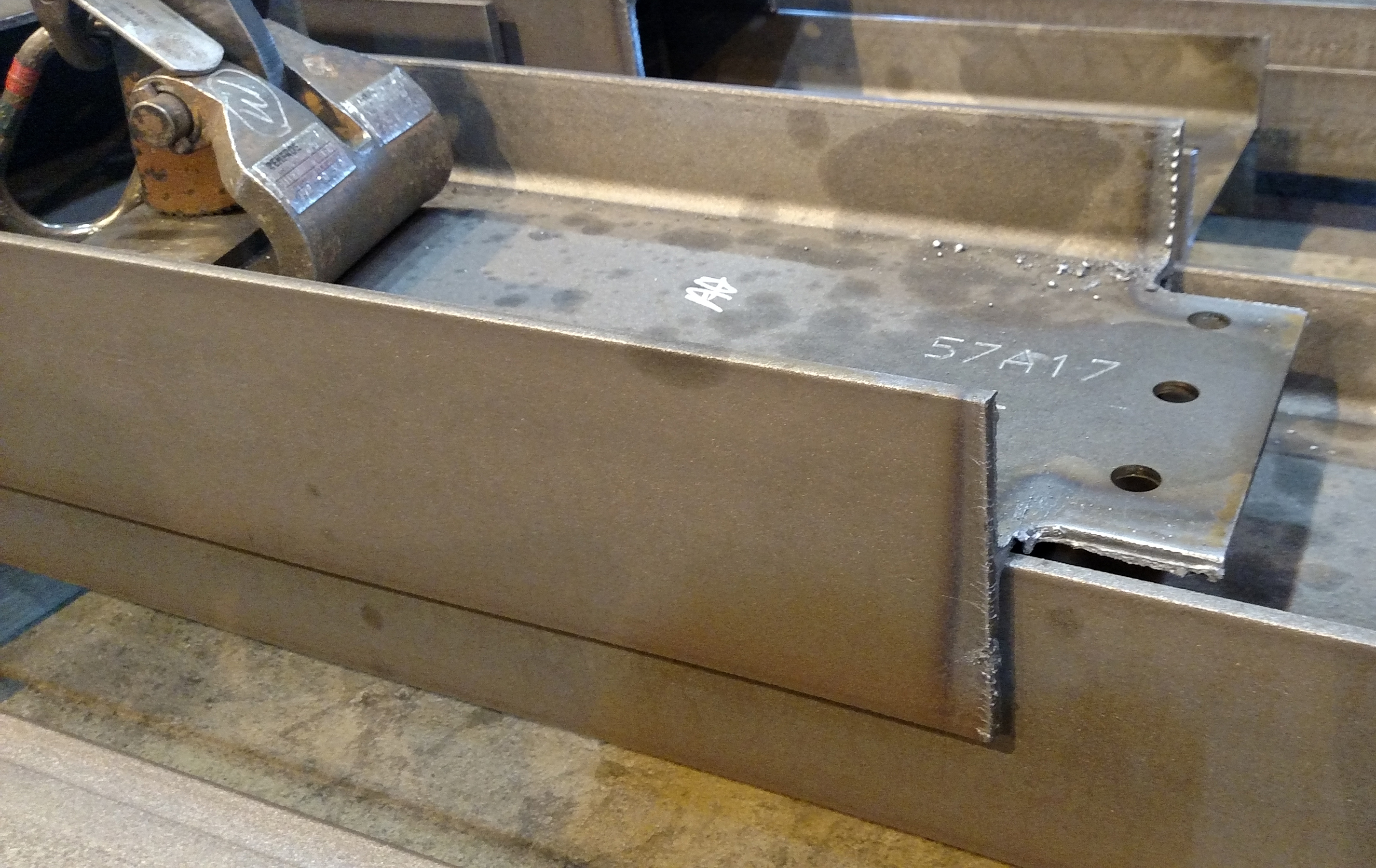 A steel beam, recently cut to size and with the ends coped per the standard requirements of the AISC Code of Standard Practice. Note that the edges have not been ground smooth; etched numbers and heat marks are visible from the fabrication process. This member is not specified to meet AISC AESS requirements.
A steel beam, recently cut to size and with the ends coped per the standard requirements of the AISC Code of Standard Practice. Note that the edges have not been ground smooth; etched numbers and heat marks are visible from the fabrication process. This member is not specified to meet AISC AESS requirements.
Pomona College Studio Art Hall
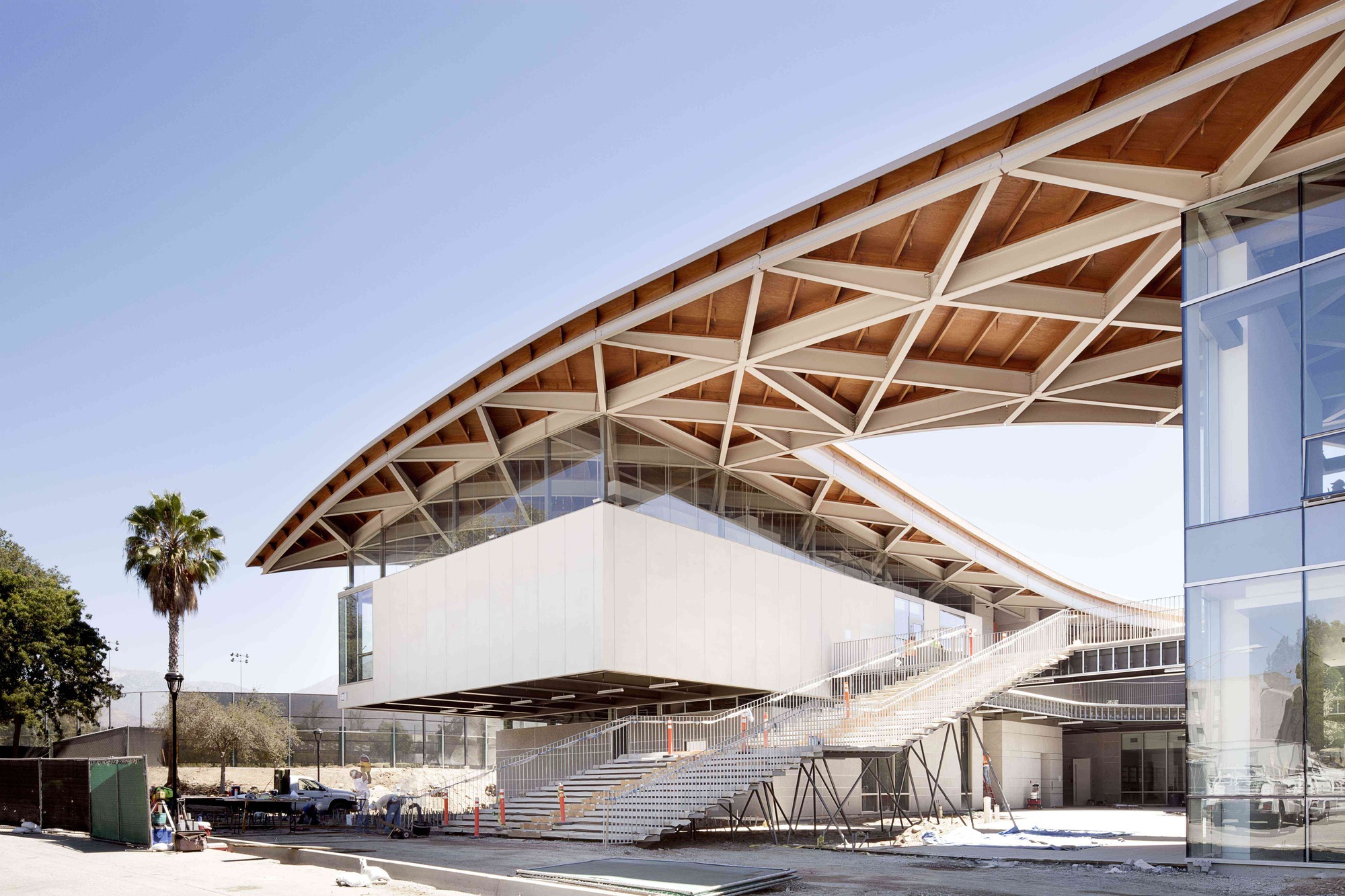 The Pomona College Studio Art Hall in Claremont, Calif., exposes the steel roof structure as an aesthetic feature that's visible from below. The height of the steel diagrid is well over 20 ft from the typical viewing distance on the ground. .
The Pomona College Studio Art Hall in Claremont, Calif., exposes the steel roof structure as an aesthetic feature that's visible from below. The height of the steel diagrid is well over 20 ft from the typical viewing distance on the ground. .
2015 IDEAS2 Award Winner
Photo credit: Jeremy Bitterman, courtesy of wHY Architecture
Brookfield Place Entry Pavilion
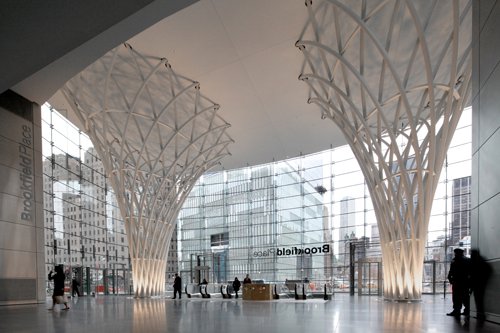
AESS trees define the Brookfield Place Entry Pavilion in New York. Uplighting the structural elements creates a dramatic effect but also highlights the importance of the surface finish. Welds were ground smooth and made flush with the steel’s surface for a cleaner aesthetic. Additionally, fitting multiple steel members together necessitated stringent erection tolerances for the trees.
2014 AISC IDEAS2 Award Winner
Photo credit: Bess Adler/courtesy of Thornton Tomasetti
Intumescent Coating
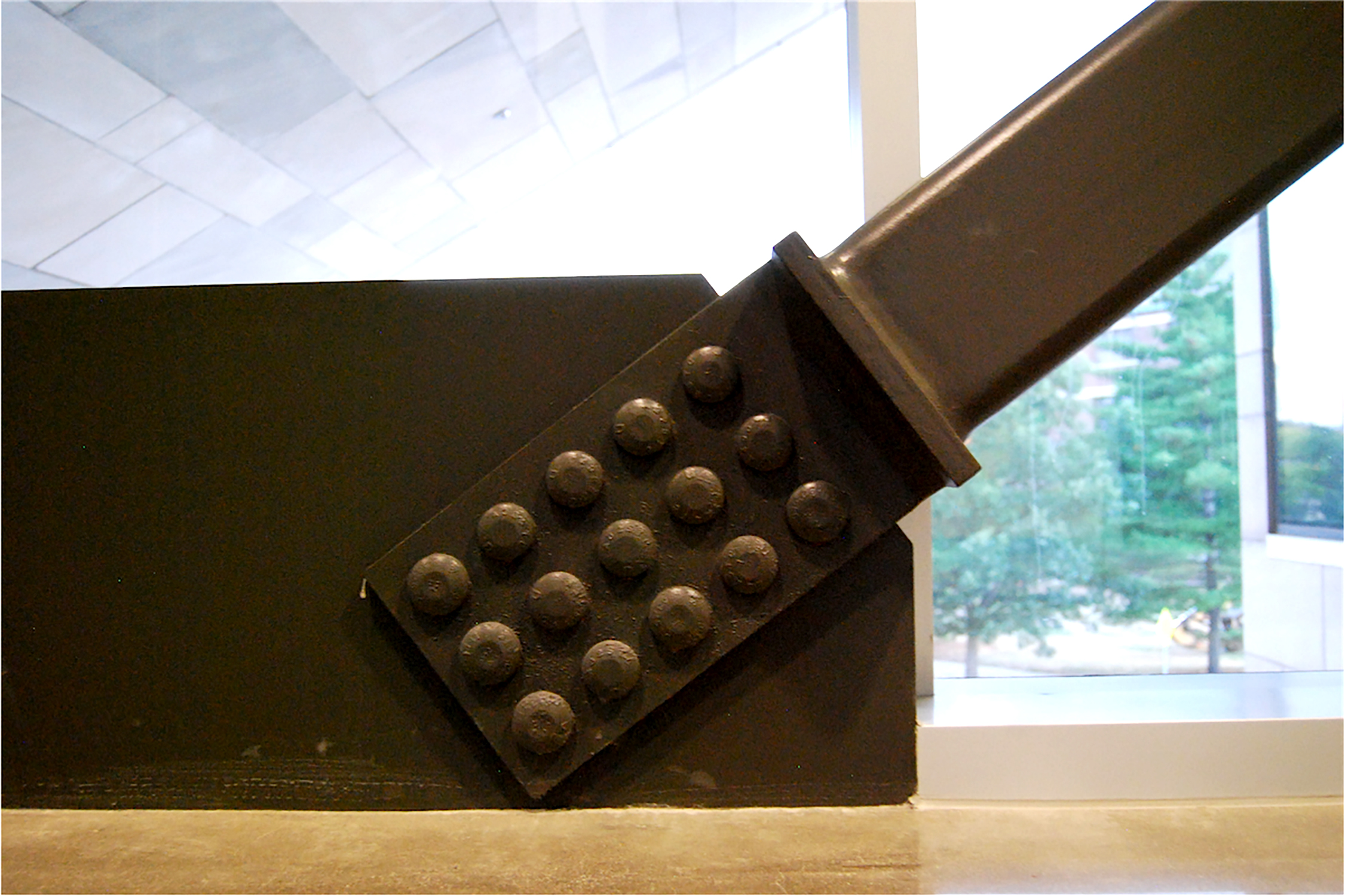 An intumescent-coated and painted connection detail at Michigan State University’s Wells Hall Addition in East Lansing, Mich.
An intumescent-coated and painted connection detail at Michigan State University’s Wells Hall Addition in East Lansing, Mich.
Photo credit: Paul Dannels/courtesy of SDI Structures
AESS emphasizing bolts and connections
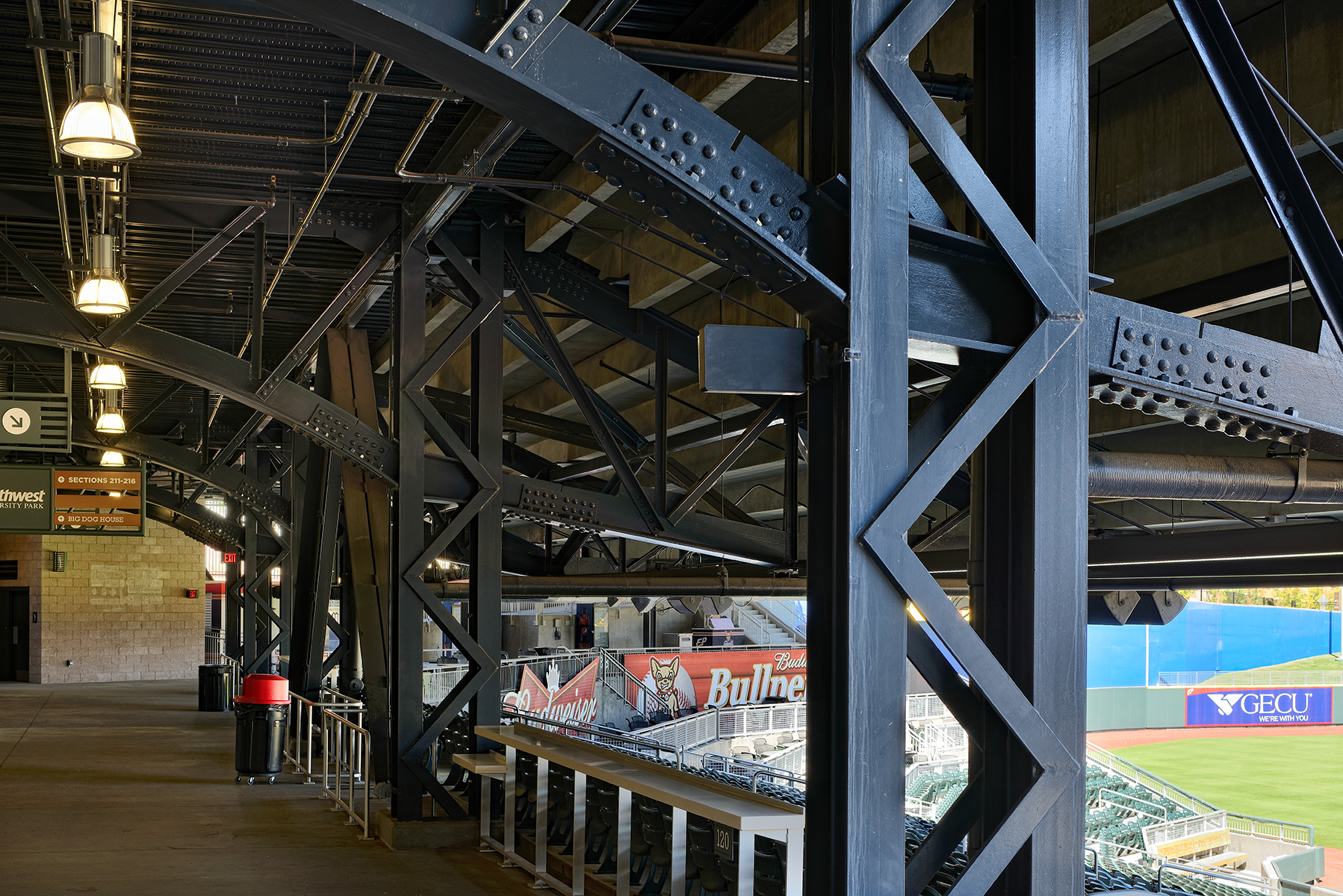 A more tectonic style of AESS assembly, emphasizing bolts and connections.
A more tectonic style of AESS assembly, emphasizing bolts and connections.
Photo courtesy of Walter P. Moore Credit: Brian Wancho
AESS emphasizing smooth connections
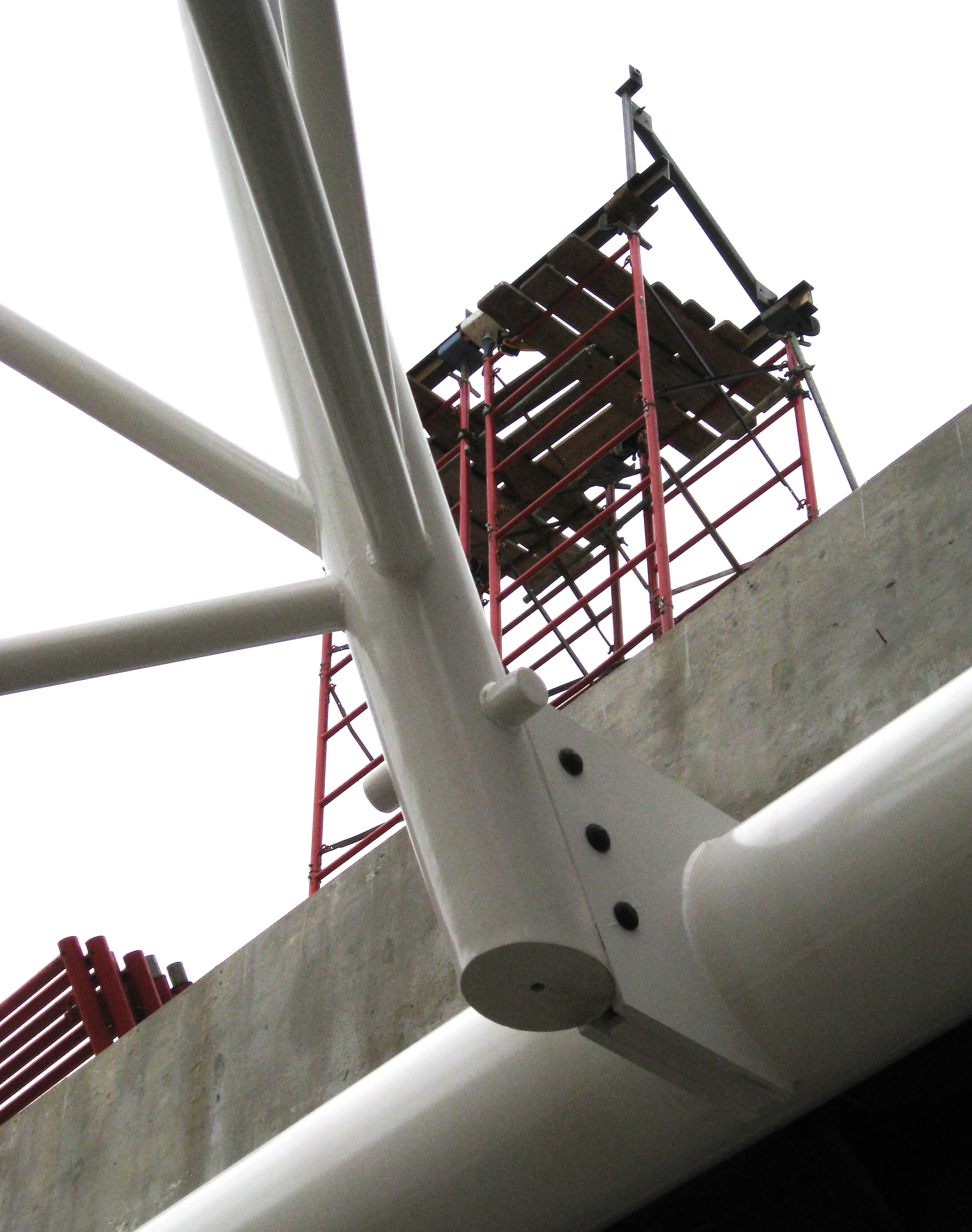 The intersection of multiple AESS members at Loyola University’s Institute of Environmental Sustainability in Chicago is seamless and smooth.
The intersection of multiple AESS members at Loyola University’s Institute of Environmental Sustainability in Chicago is seamless and smooth.
Photo courtesy of © Skidmore, Owings & Merrill LLP
Twisting AESS
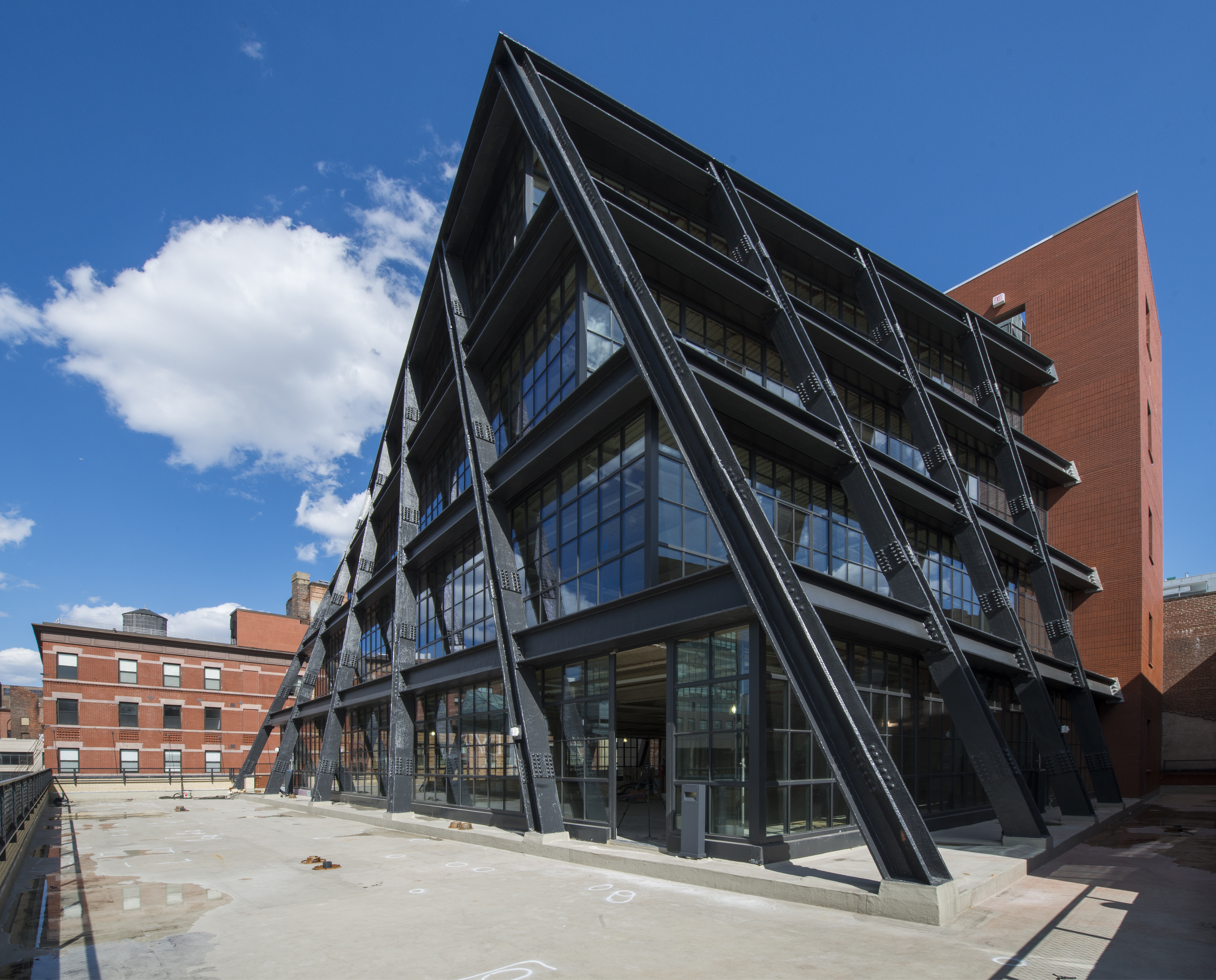
837 W Washington in New York was challenged with tight tolerances and straightness requirements so that all steel members would precisely align in this visibly twisting form. The exoskeleton structure is exposed to the exterior and requires additional applied treatment to prevent corrosion.
Photo courtesy of Gilsanz Murray Steficek
University of Michigan
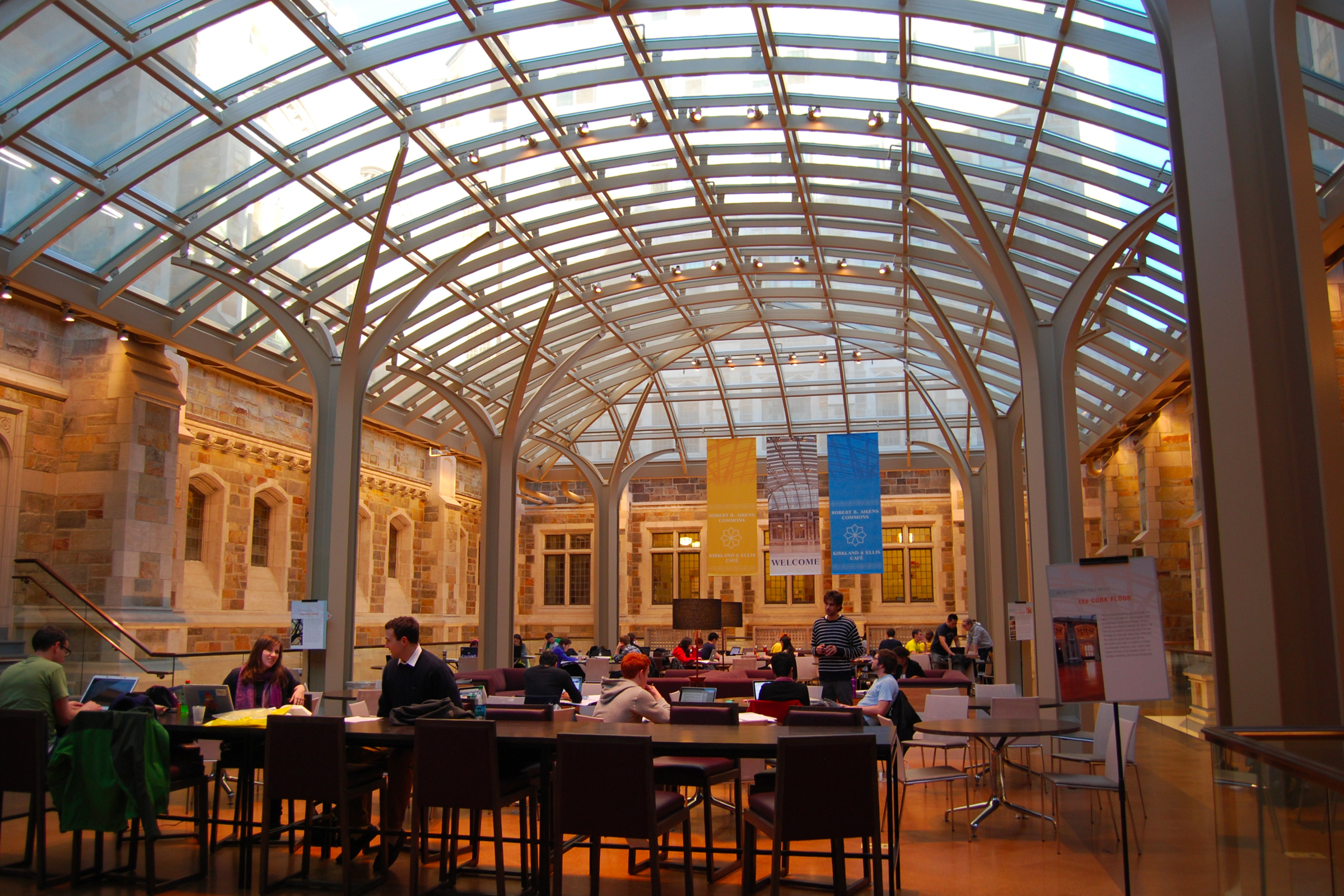
Robert B. Aikens Commons at the University of Michigan in Ann Arbor, Mich.
Photo courtesy of SDI Structures
Etching on Non AESS Steel
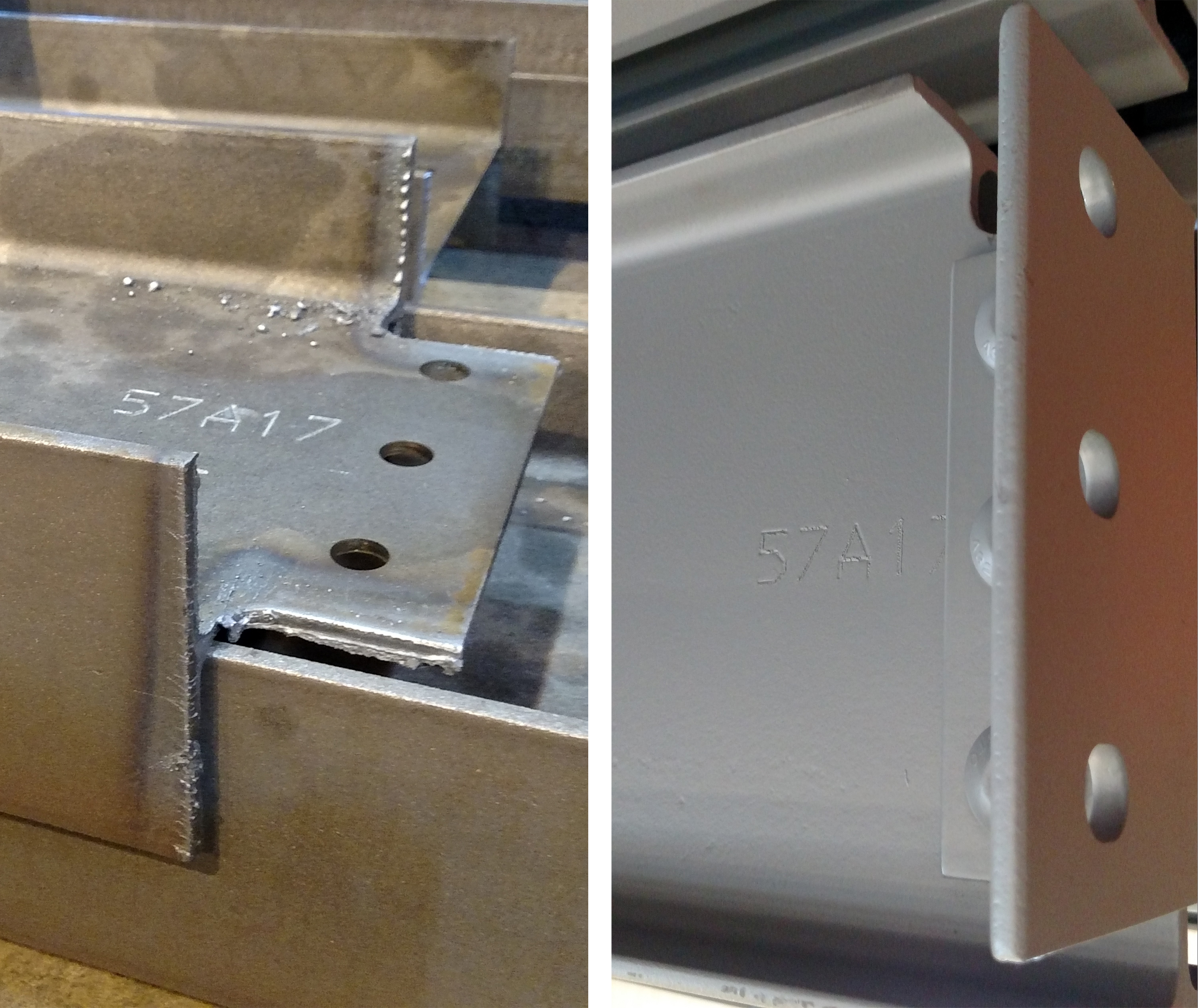 Numbers are etched into a steel beam (left) during the fabrication process. After receiving a painted finish coat in the shop, the tracking number for the project can still be seen.
Numbers are etched into a steel beam (left) during the fabrication process. After receiving a painted finish coat in the shop, the tracking number for the project can still be seen.
Photo courtesy AISC
Mill Marks
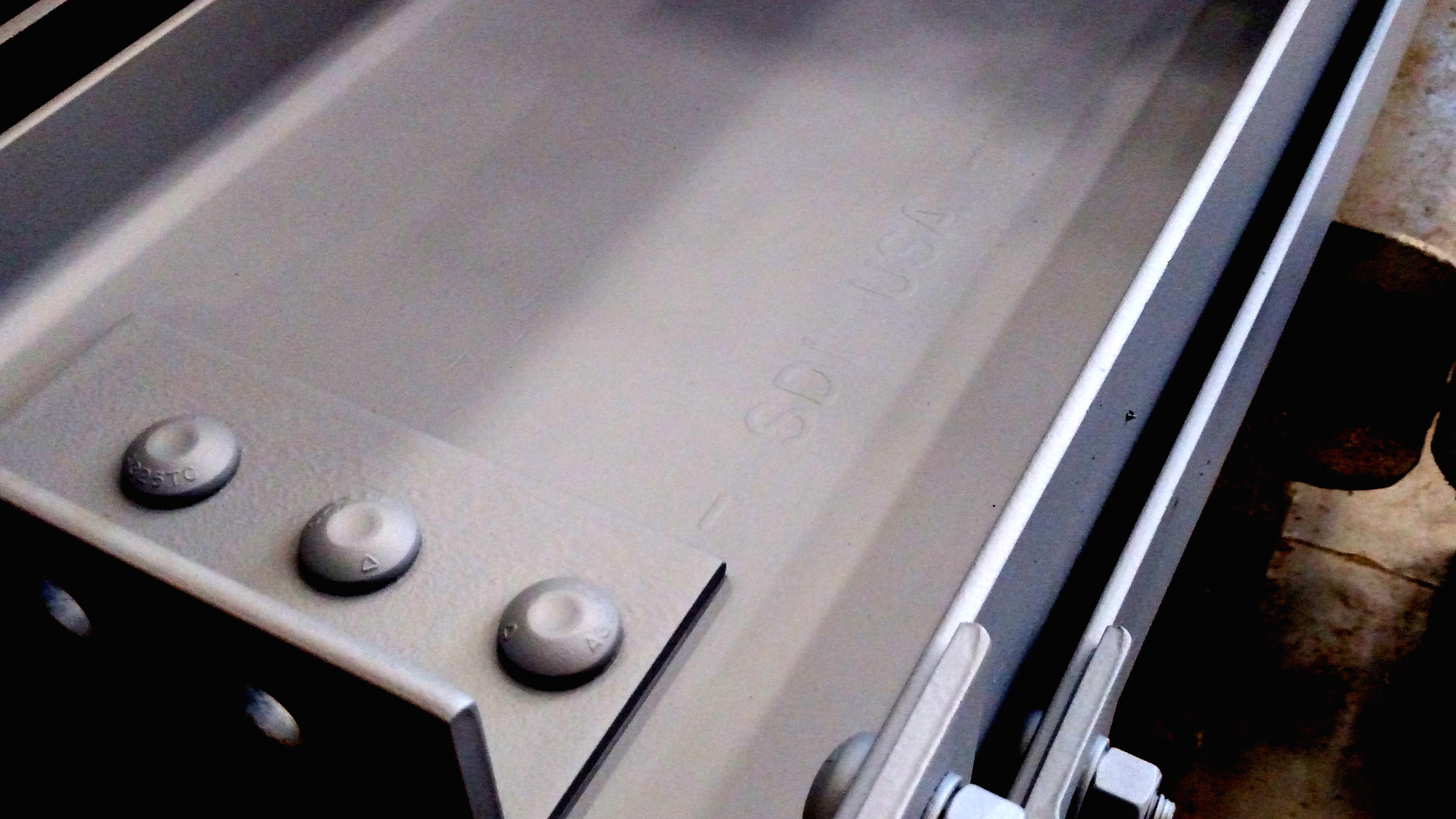
Mill marks from Steel Dynamics, Inc. (SDI) are visible through the painted finish on this structural member.
Photo courtesy of AISC
Boston Logan International Airport
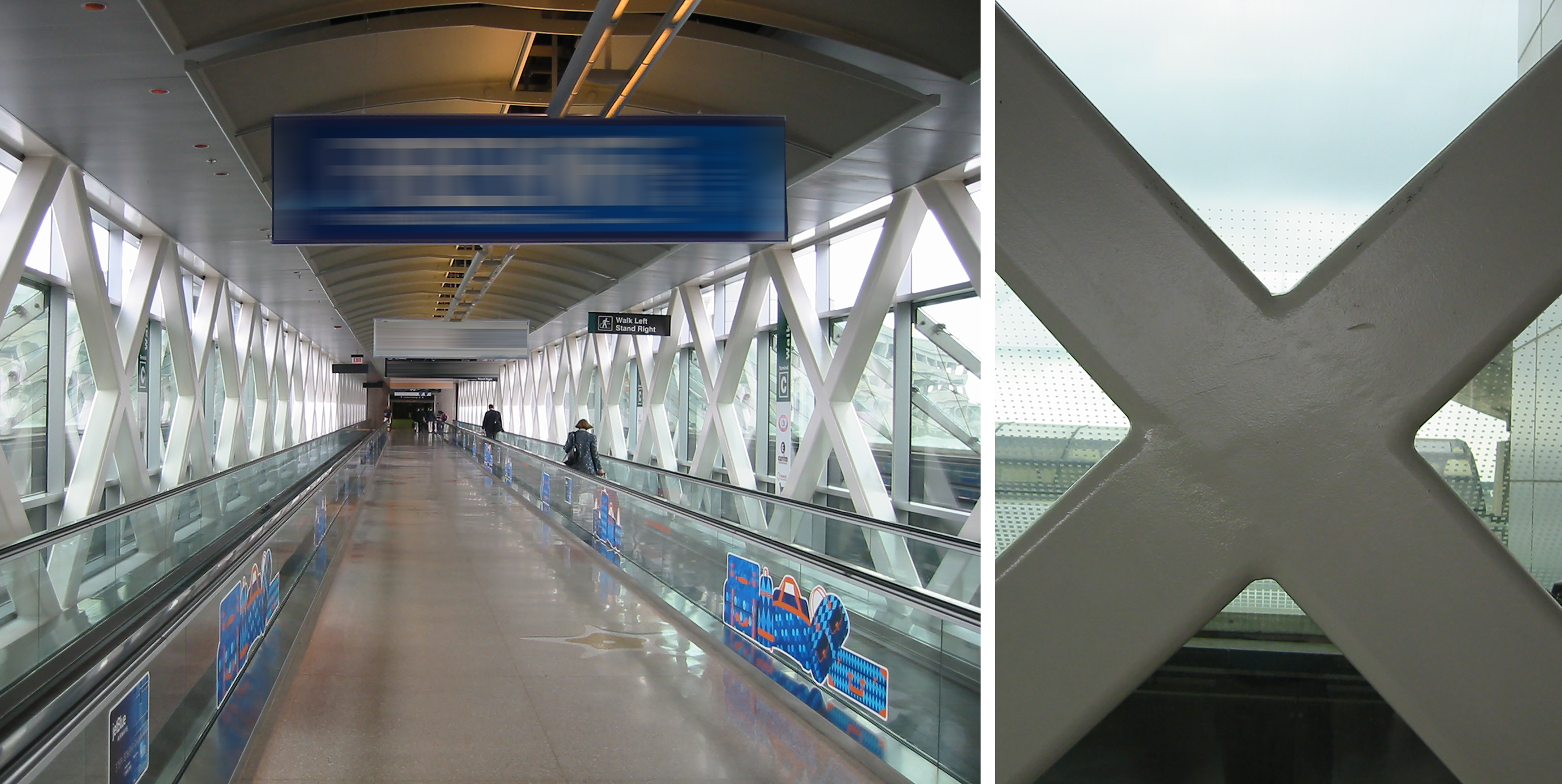 A series of intersecting hollow steel sections (HSS) are visible along the pedestrian bridge (left) at Boston Logan International Airport. A close-up view (right) shows the weld seams, which have been ground out consistently at each architecturally exposed member and coated with intumescent paint.
A series of intersecting hollow steel sections (HSS) are visible along the pedestrian bridge (left) at Boston Logan International Airport. A close-up view (right) shows the weld seams, which have been ground out consistently at each architecturally exposed member and coated with intumescent paint.
Photo courtesy of AISC
Queen Richmond Centre West
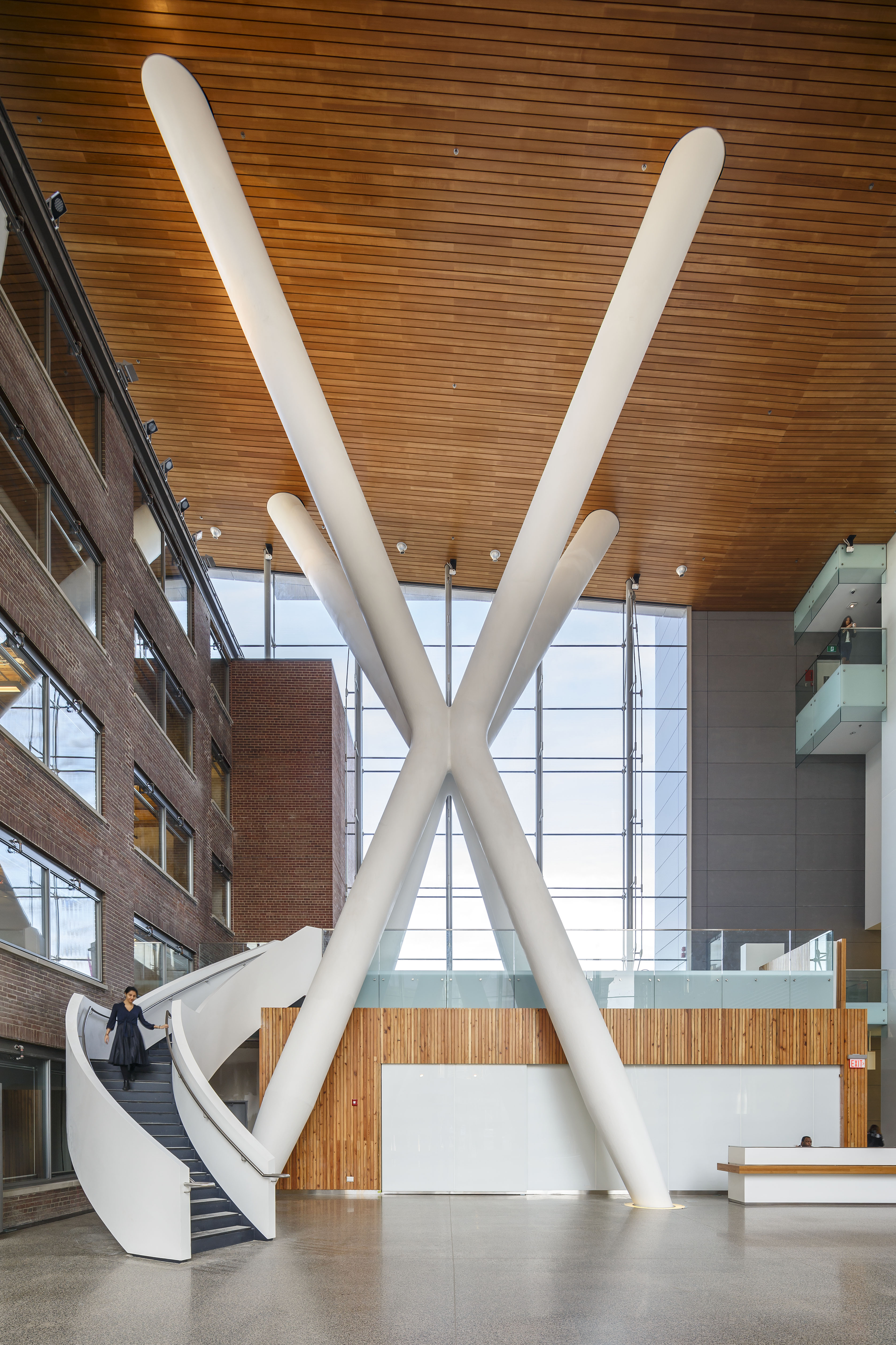
Steel castings typically do not fall under AESS requirements per AISC’s Code of Standard Practice.
Photo credit: doublespace photography/ courtesy of CastConnex
Chicago O’Hare International Airport
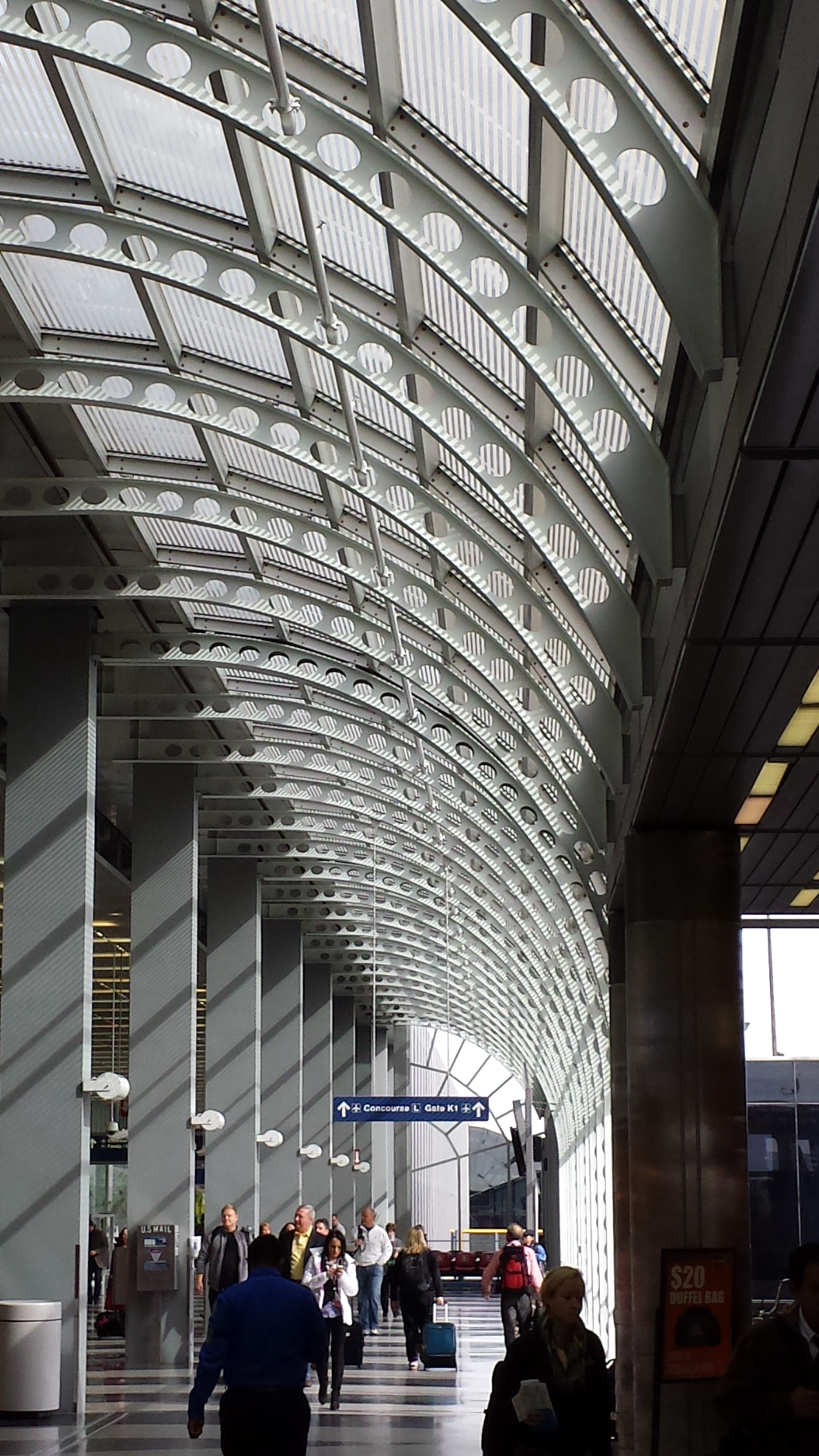 Daylight penetrates the interior of the United Airlines Terminal (Terminal 1) at O’Hare International Airport in Chicago.
Daylight penetrates the interior of the United Airlines Terminal (Terminal 1) at O’Hare International Airport in Chicago.
Photo courtesy of AISC
Sacramento International Airport
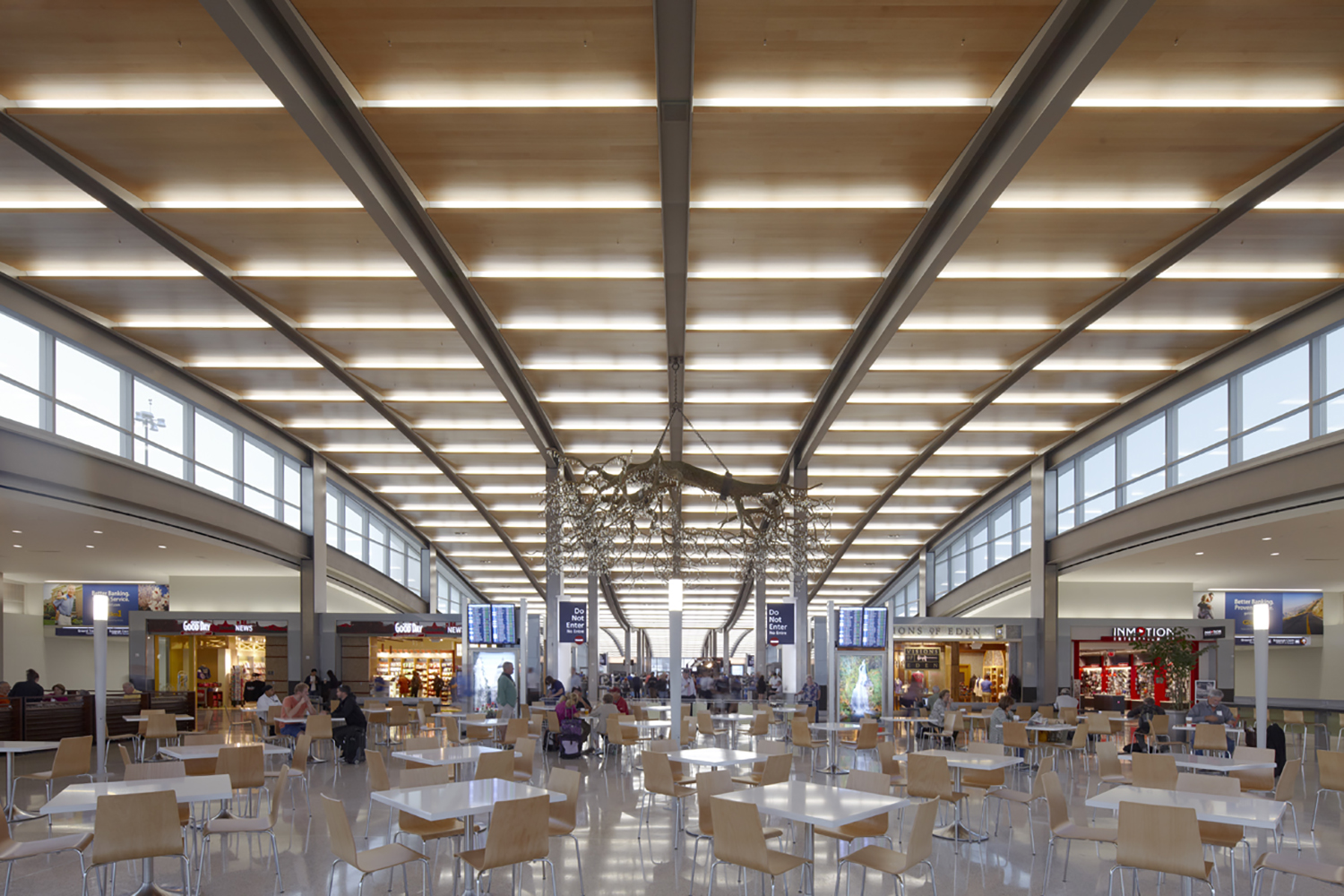 The Central Terminal and Concourse B Expansion at Sacramento International Airport.
The Central Terminal and Concourse B Expansion at Sacramento International Airport.
Photo credit: Tim Griffith
United Therapeutics Pedestrian Connector
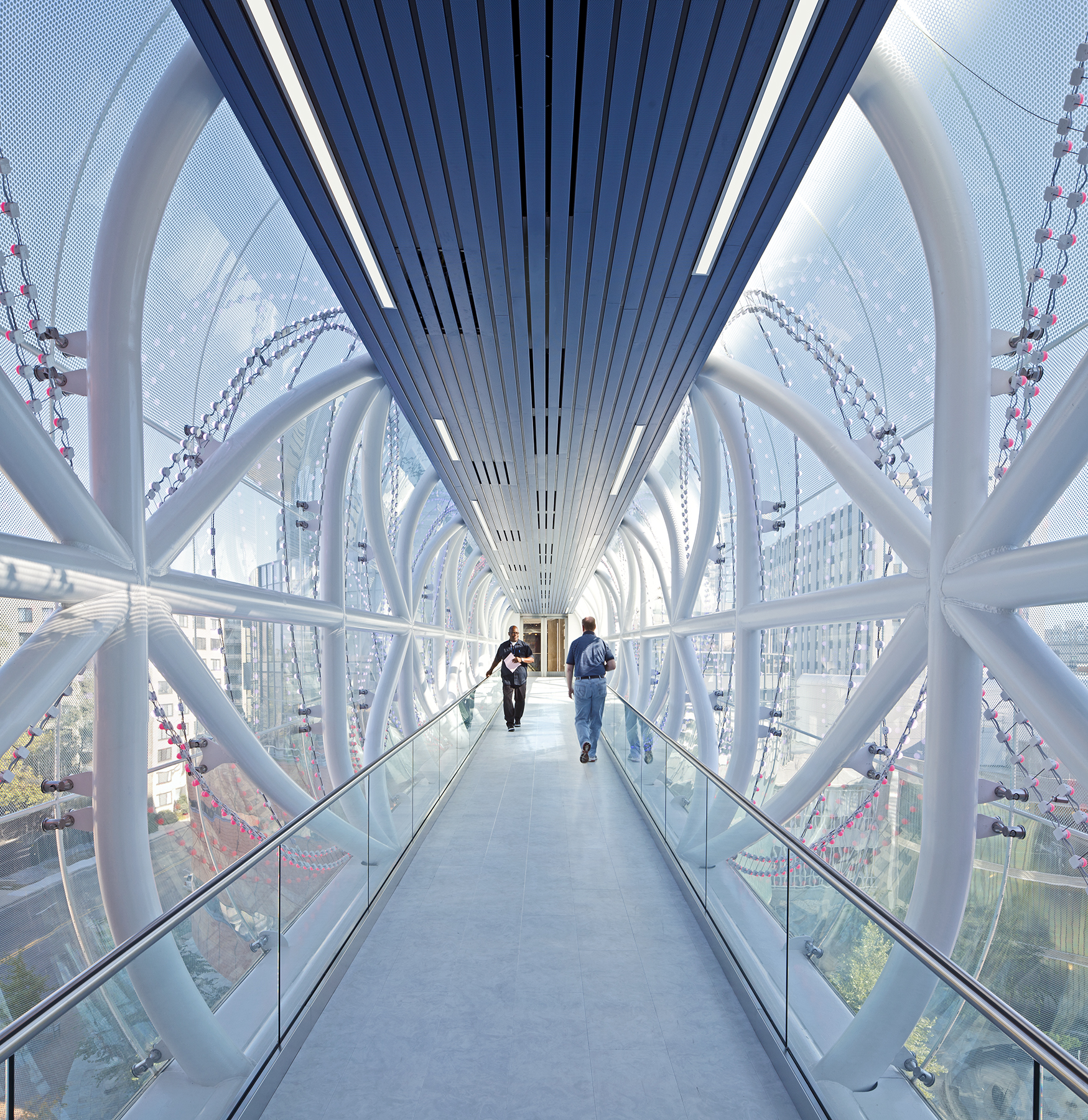 United Therapeutics Pedestrian Connector
United Therapeutics Pedestrian Connector
2014 IDEAS2 Award Winner
Photo credit: © Ron Blunt
Anaheim Regional Transportation Intermodal Center
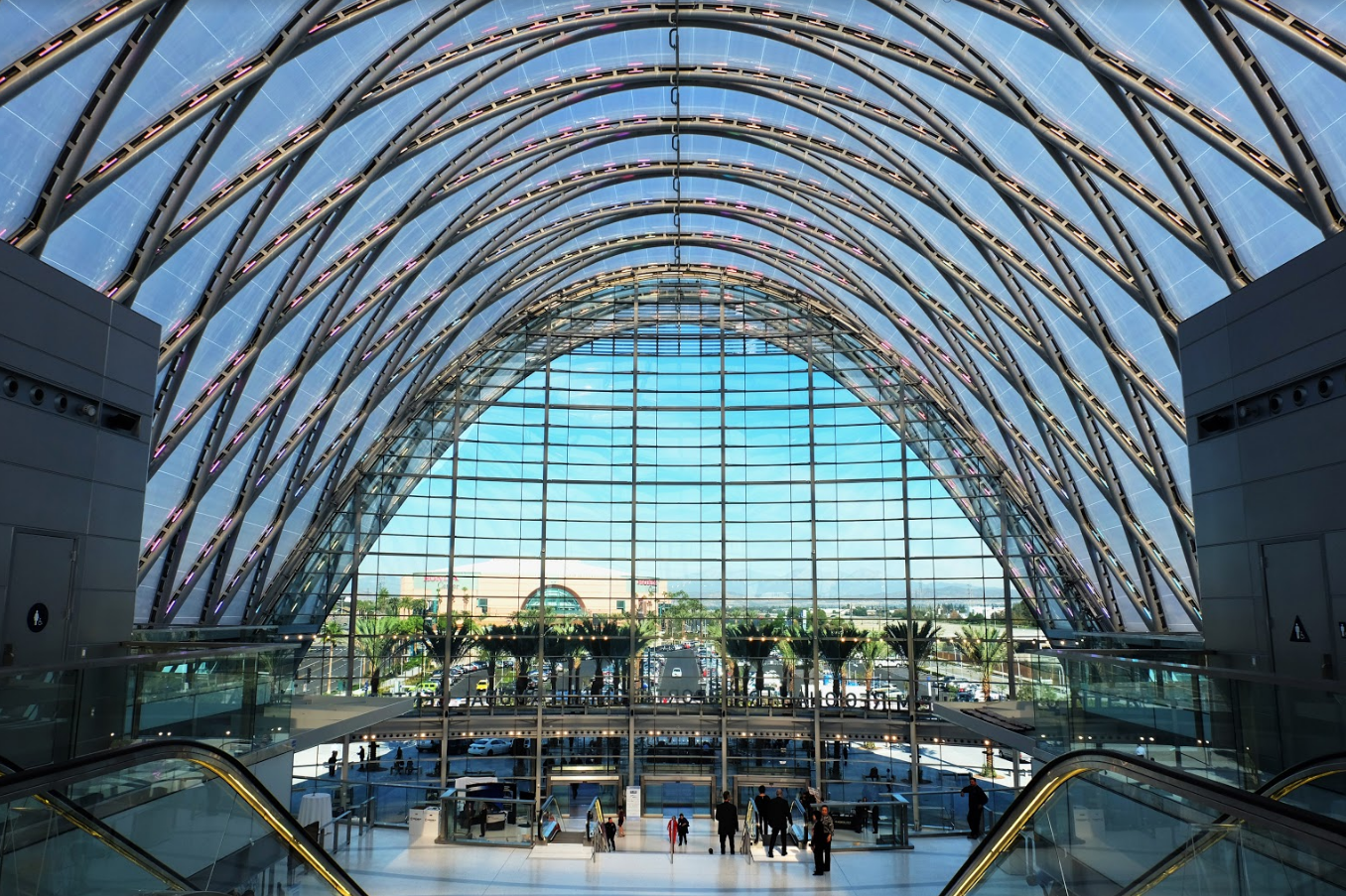 Anaheim Regional Transportation Intermodal Center - Phase 1
Anaheim Regional Transportation Intermodal Center - Phase 1
2015 IDEAS2 Award Winner
Image courtesy of Thornton Tomasetti
Florida Polytechnic University
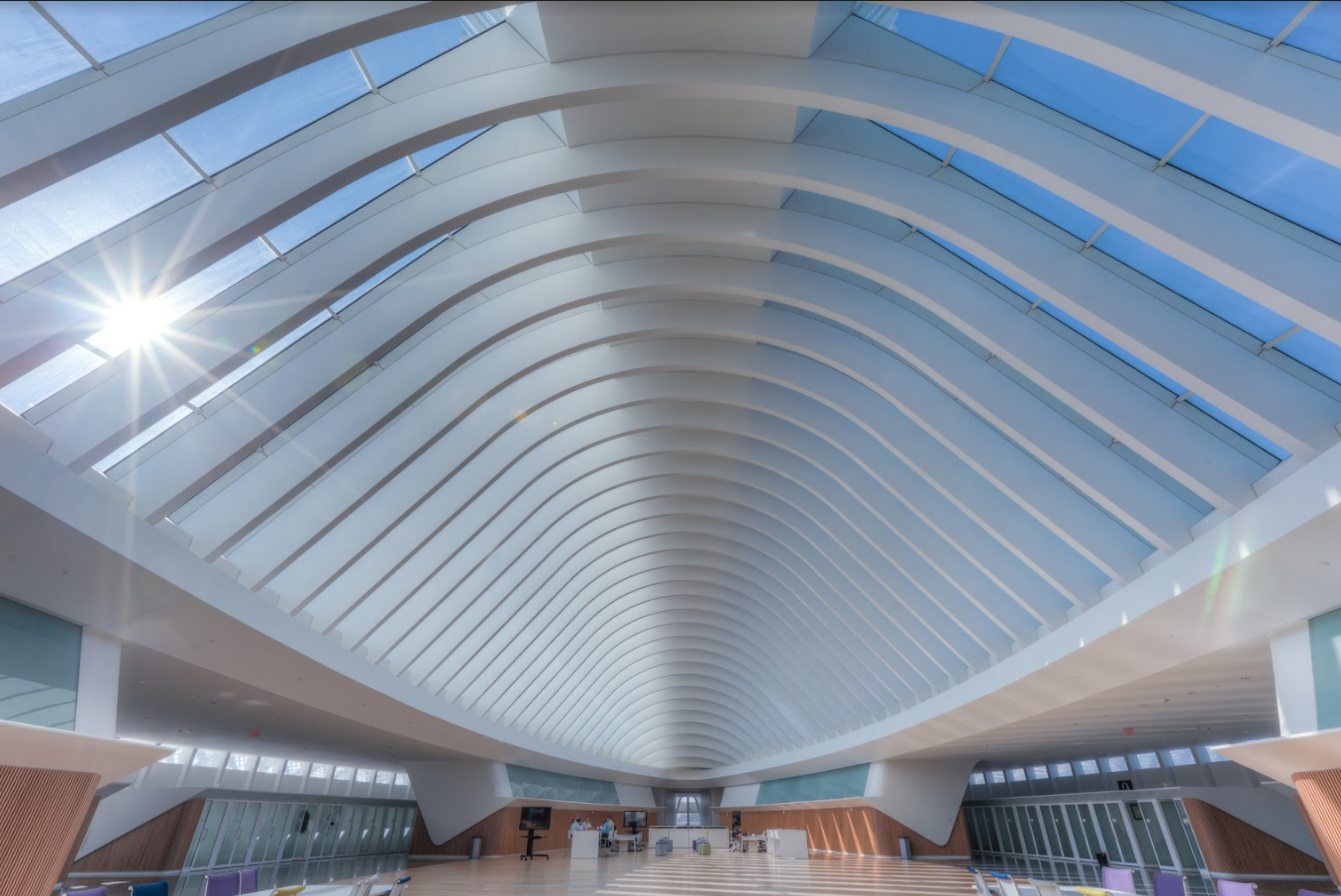 Florida Polytechnic University
Florida Polytechnic University
2015 IDEAS2 Award Winner
Photo credit: Macbeth Photo
Denver Union Station
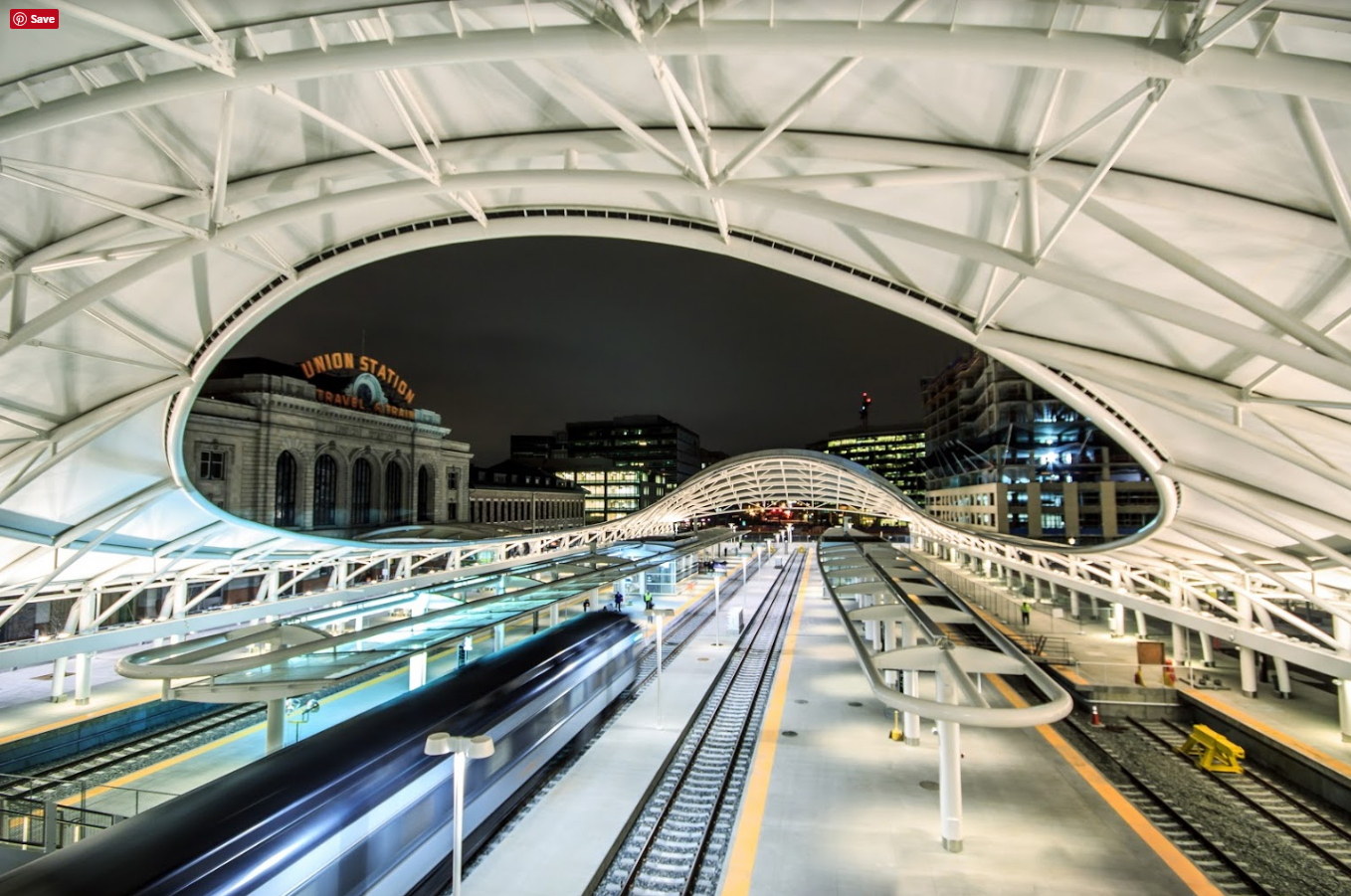 Denver Union Station
Denver Union Station
2015 IDEAS2 Award Winner
Photo credit: Ryan Dravitz Photography
The Gourd
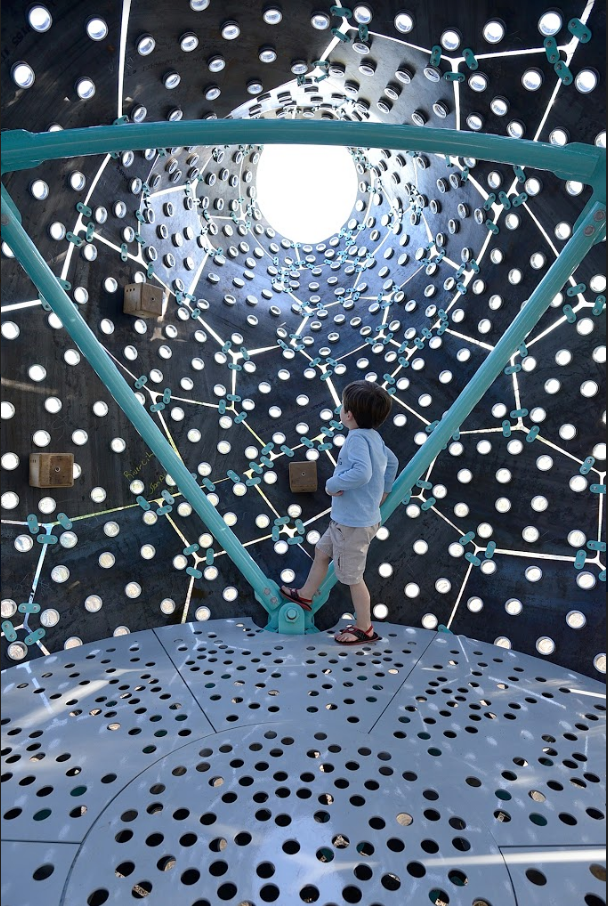 The Gourd
The Gourd
2016 IDEAS2 Awards Winner
Photo credit: Scott Adams
Steel Solutions Center
The Steel Solutions Center is for people who need technical assistance, innovative solutions, or tools to make structural steel design even easier.

